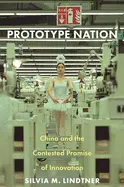
Prototype Nation - by Silvia M. Lindtner
ISBN: 0691207674Date read: 2023-11-15
How strongly I recommend it: 1/10
(See my list of 360+ books, for more.)
Go to the Amazon page for details and reviews.
China and the contested promise of innovation. Author spent years in Shenzhen in the heart of the maker scene. This is her perspective on the CCP’s encouragement of that transformation.
my notes
Prototyping at vast scales came to be viewed as a promising way to intervene in entrenched structures of inequality, exploitation, and injustice.
This promise became a demand for individual self-upgrade and economic development.
If people became makers of technology, they would own the things they made and could decide for themselves what their technologies - and by extension their social, economic, and political lives - would be like.
If we see ourselves as the makers of machines, we are invested in creating the future, rather than having it imposed on us.
the transformation desired by the CCP: a transformation from socialist citizens who were focused on politics and class struggle into neoliberal citizen subjects who were focused on economic self-fashioning.
Discourses rendered colonial regions and the global south as “other”, as lagging “behind” the West in terms of their economic and social development and as lacking the capacity for self-driven innovation and creation.
This position legitimized all kinds of Western interventions, from colonial exploitation to foreign aid and development programs.
It was the very narrative of promise and progress that masked continuous resource extraction by the West.
The call to unleash inner creativity brings the tantalizing promise of self-reward, thereby almost negating the thread of insecurity.
“Gongban”, which literally translates as “public board” - a production-ready reference board designed for end-consumer electronics and industry appliances.
The gongban public boards are designed so that the same board can be a reference (a suggestion) for many different devices.
One board can make many differently shaped phones.
Each gongban comes with a list of all its components and how they work together - an open Bill of Materials (BOM).
In the United States, open source making was an elitist practice that, despite its rhetoric of openness and democratization, largely benefited the same group of already-affluent and already-empowered.
Arduino catered primarily to a fairly affluent middle class who could afford to hack in their free time.
In contrast, gongban had empowered a group of people typically not considered creative.
The designer’s orientalist embrace of shanzhai as “unidentified” had masked so much of shanzhai’s actual workings.
The heart of shanzhai production were two key artifacts:
gongmo (public face or shell)
gongban (public board).
Gongmo referred to the encasings and the aesthetics of the devices.
Gongban referred to the interior - the printed circuit board.
I traveled to Ghana in the spring of 2018 for a new research project (one that might occupy me for the next ten years).